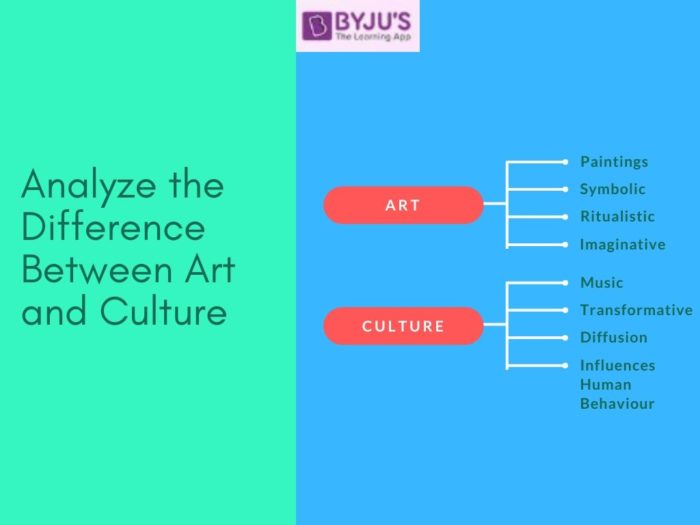Human beings have a constant need to express their beliefs and ideas in any form possible. Art and culture are two such modes where human beings have chosen to express themselves through these two aspects, although they often overlap with each other at times making it difficult to differentiate from each other
Art can be defined as the representation of reality, communication of emotion, expression, or other qualities.
Culture is a modern concept that evolved as a central concept in anthropology during the 20th century, and it comprises a wide variety of human behaviours and phenomena that cannot be attributed directly to genetic inheritance.

As this article will highlight the key differences between art and culture, candidates writing the IAS Exam this year will find it useful.
Aspirants can find more Difference Between Articles, by visiting the linked page
The differences between art and culture are given in the table below:
Differences between Art and Culture
| Art |
Culture |
| Art is a diverse range of human activities in creating visual, auditory, or performing artifacts (artworks), expressing the author’s imaginative, conceptual ideas, or technical skill. | Culture is an umbrella term which encompasses the social behaviour and norms found in human societies, as well as the knowledge, beliefs, laws, customs, capabilities, and habits of the individuals in these groups |
| Humans learn art by emulating their peers or learning by themselves | Humans acquire culture through the learning processes of enculturation and socialization, which is shown by the diversity of cultures across societies |
| Art is intended to be a form of appreciation of beauty and expression of emotional power. | Culture serves as a guideline for behaviour, dress, language, and demeanour in a situation, which serves as a template for expectations in a social group. |
| Art can be expressed through a variety of mediums including paintings, sculpture, weaving etc | Along with art, culture can be exhibited and expressed through behaviour, clothes, traditions, and festivals |
| Art as a form of expression has always existed since pre-historic times in the form of cave-paintings and rock paintings | The modern term “culture” can be traced back to the term used by the Ancient Roman orator Cicero (3 January 106 BC – 7 December 43 BC) in his Tusculanae Disputationes, where he wrote of cultivation of the soul or “cultura animi” |
| Paintings such as Mona Lisa by Leonardo Da Vinci can be termed as examples of art. | Appreciation of Opera, hospitality norms in different nations are some of the many examples of culture |
Art and Culture is an integral part of the UPSC Prelims Exams. Candidates can use the following links while preparing for this section:
- NCERT Notes: Art and Culture for UPSC
- Important Topics and Subtopics of UPSC Art and Culture
- How to tackle Art and Culture for UPSC Prelims
Difference Between Art and Culture – Download PDF Here
Frequently Asked Questions about Art and Culture
How is art and culture related?
How does culture affect art?
Candidates can find the general pattern of the UPSC Exams by visiting the UPSC Syllabus page. For more articles and exam-related preparation materials, refer to the links given in the table below:
Related Links

Comments